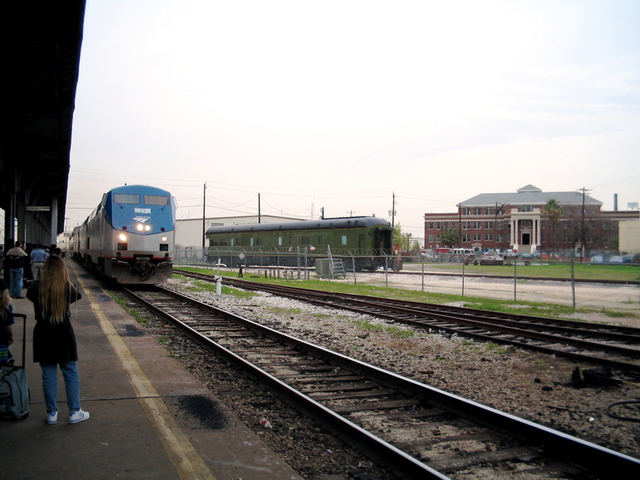 There are few things more naturally intimidating than a huge, speeding locomotive: you can’t steer the thing, it takes forever to stop…in short, it’s an inexorable force composed of metal and nightmares. However, in spite of its formidable appearance, too many people fail to appreciate the hazards associated with adjacency to a train or to steer clear of its fixed path. This underestimation of risk contributed to 8 fatalities and 184 injuries in the U.S. in 2012.
There are few things more naturally intimidating than a huge, speeding locomotive: you can’t steer the thing, it takes forever to stop…in short, it’s an inexorable force composed of metal and nightmares. However, in spite of its formidable appearance, too many people fail to appreciate the hazards associated with adjacency to a train or to steer clear of its fixed path. This underestimation of risk contributed to 8 fatalities and 184 injuries in the U.S. in 2012.
While these numbers are dwarfed by those caused by traffic accidents off the rails, the sheer force involved in a train accident makes the prospect far more intimidating. (Whereas 1.4% of 2012 auto accident injuries resulted in death, 4.3% of train accident injuries were fatal.)
Don’t fall victim to the iron horse: Take heed of standard safety guidelines to stay out of harm’s way.
Table of Contents
1. Don’t underestimate a train’s speed.
A train may resemble a sluggish steel caterpillar from a distance, but it can run as quickly as 79 miles per hour. At that speed, it can cover the length of a football field in a mere 3 seconds. Don’t take foolish risks under the delusion that you will be able to extract yourself from a bad situation before it turns worse.
2. Wait for it…
You cannot assume that, just because one string of cars has passed, it is safe to cross the track. Another may be coming from another direction or following on the heels of the first. Take nothing for granted. Always look both ways.
3. Don’t rely on your ears alone.
You would expect that steel wheels on a steel track coupled with a screeching whistle would be easy to detect, but volume is no substitute for vigilance. Snow and ice can dampen the sound of a train’s advent, and inattention deafness has been known to block out even the sound of a train whistle. When it comes to your safety, all of your senses should come into play.
4. Follow the signals.
All those lights, bells, and crossing arms are telling you what to do because they know something you don’t. Even if no train is apparent, one could come out of nowhere. To avoid hazards you can’t see, obey the signals you can.
5. Never enter a railroad crossing prematurely.
In heavy traffic, the natural impulse is to fill each available inch forward as it appears. However, when a line of traffic crosses a railroad track, this could be a recipe for disaster in the event that a train comes while someone is trapped mid-crossing. Instead of taking this risk, wait until you have enough space on the other side to clear the tracks completely before driving across.
6. If you get stuck, get out.
We’re all familiar with the old movie trope of someone getting stuck on the railroad track in their car while the train is coming. Invariably, this person will be hit by the train while they try to rev up their car. In reality, the proper course of action is obvious: Exit the vehicle and call 911.
7. Don’t run next to a train.
Running, bicycling, etc. next to a train carries a risk of falling or swerving onto the tracks. As paranoid as it may sound, people have been killed and seriously injured this way. Thus, you should always give moving trains a wide berth.
8. Stay away from the tracks.
It should follow naturally that if a moving train is dangerous, their place of passage would be, as well. However, railroad tracks remain a popular place to walk, take pictures, etc. Because trains move so quickly, their route should always be left clear.
9. Exercise caution when boarding a train.
When you are waiting to board a train, you should stay well behind the yellow line until the train you are waiting for is halted. Mind the gap between the train and the platform, and never try to catch the train if it starts moving while you are still outside. Never put yourself in a position to fall/be tossed onto the tracks.
Fortunately, normal safety measures will be enough to protect you from a train accident. However, faulty track designs, conductor negligence, etc. can be harmful even to responsible citizens. If you should suffer from injuries from a train accident and despair of finding compensation to treat them, personal injury attorneys such as Good Guys Injury Law can equip you with the information and support you need to carry on. There’s no need to live with something that just isn’t fair, mentally numb, and not healing when legal resources are available. For more information, call (801) 506-0600.
Image courtesy of Bill Bradford